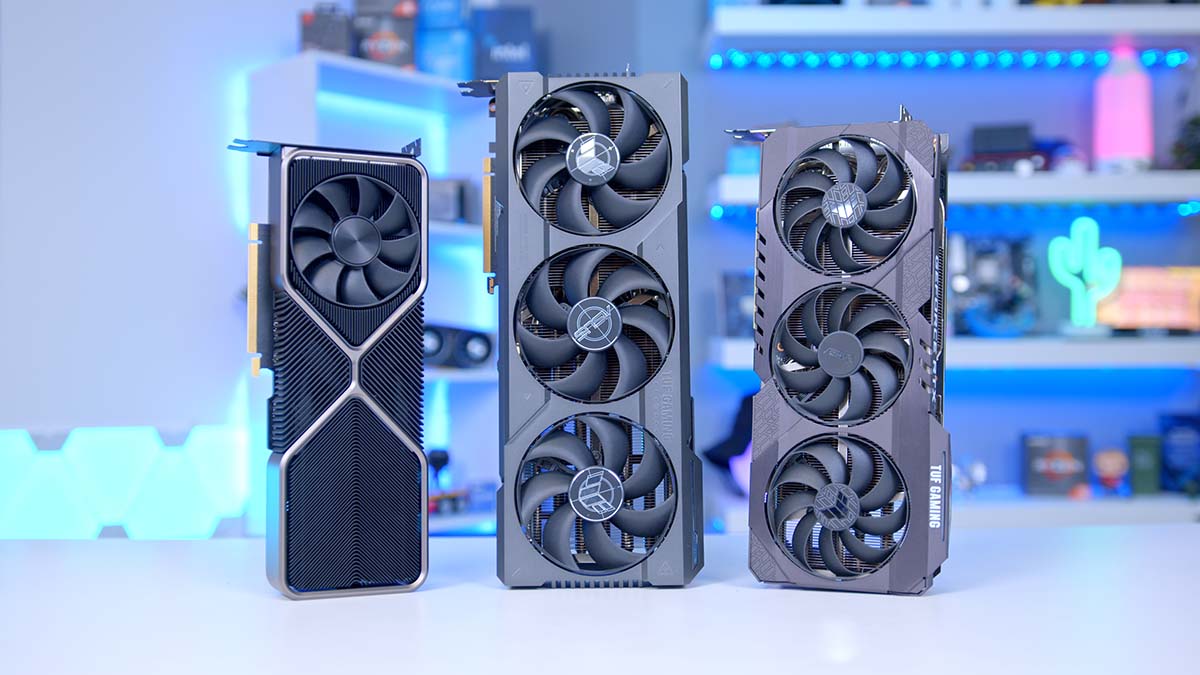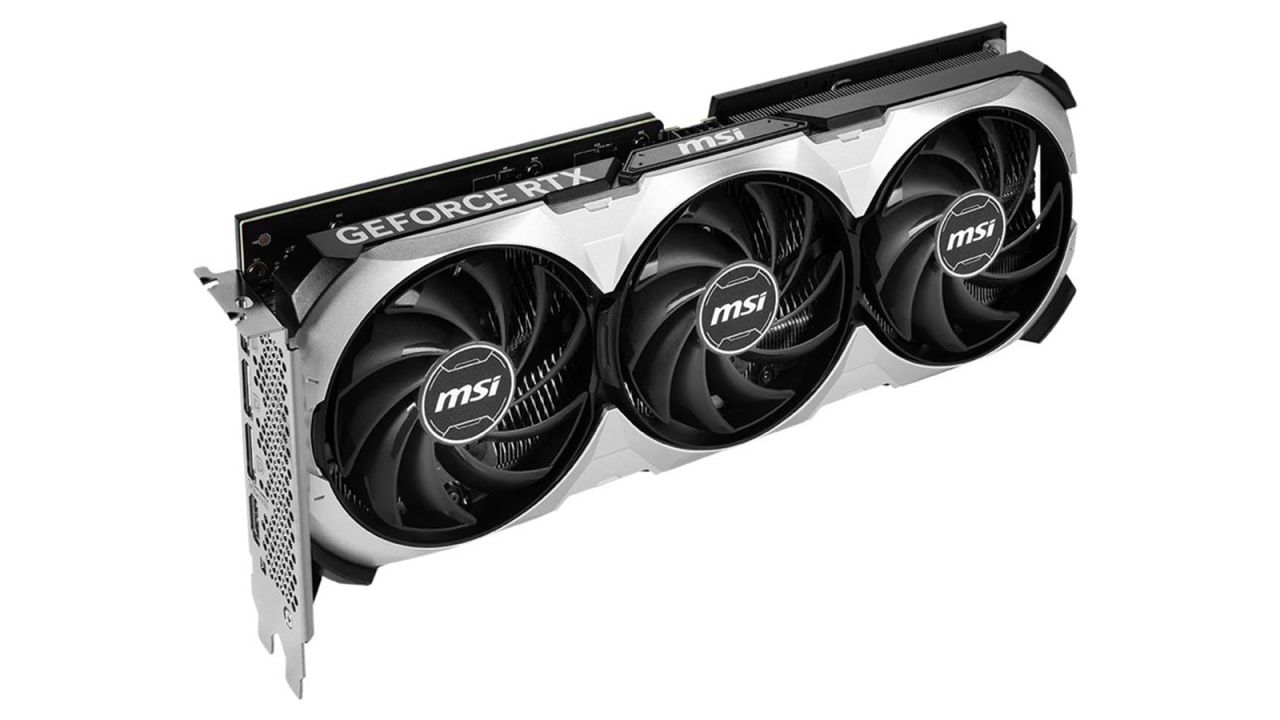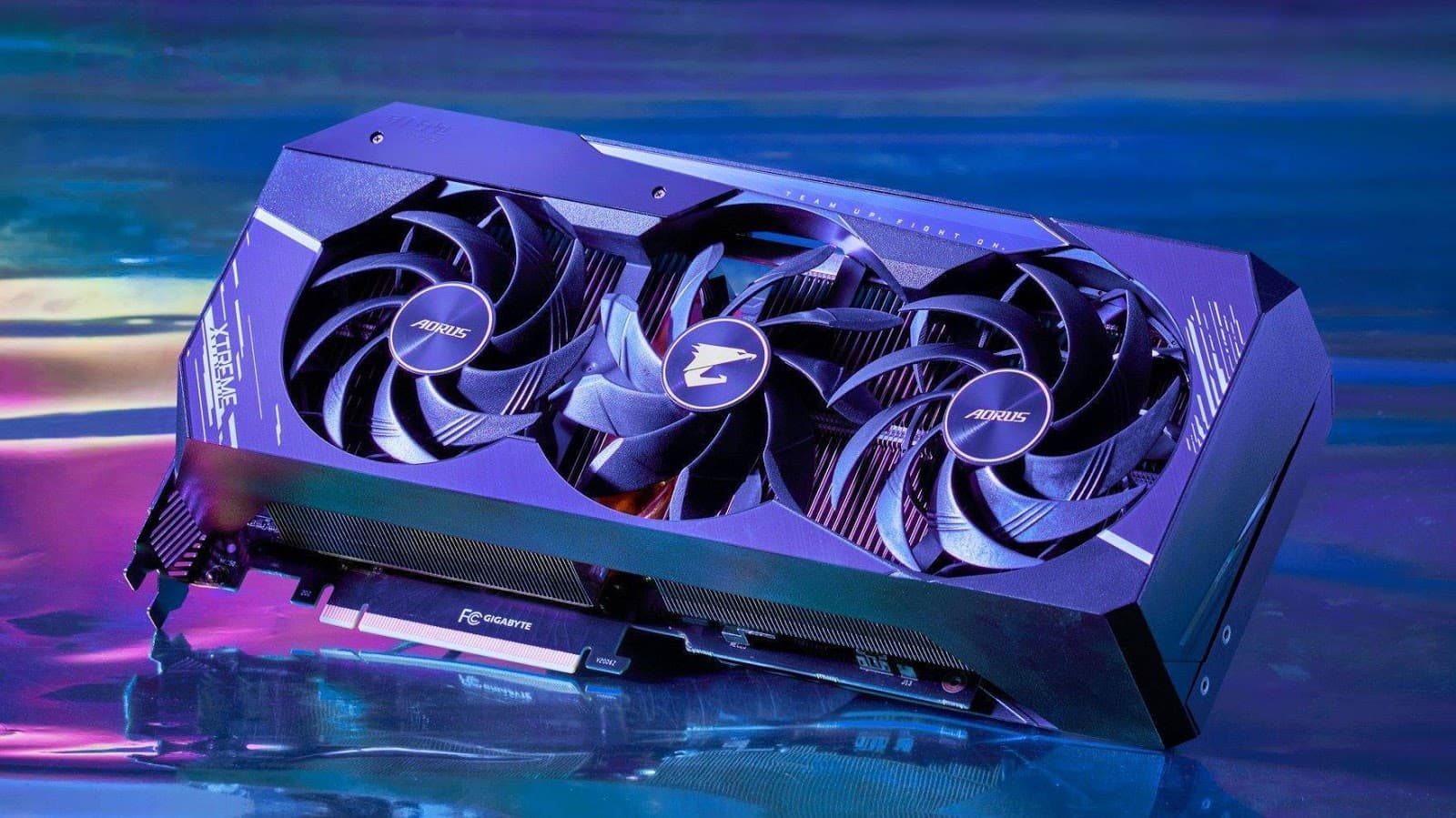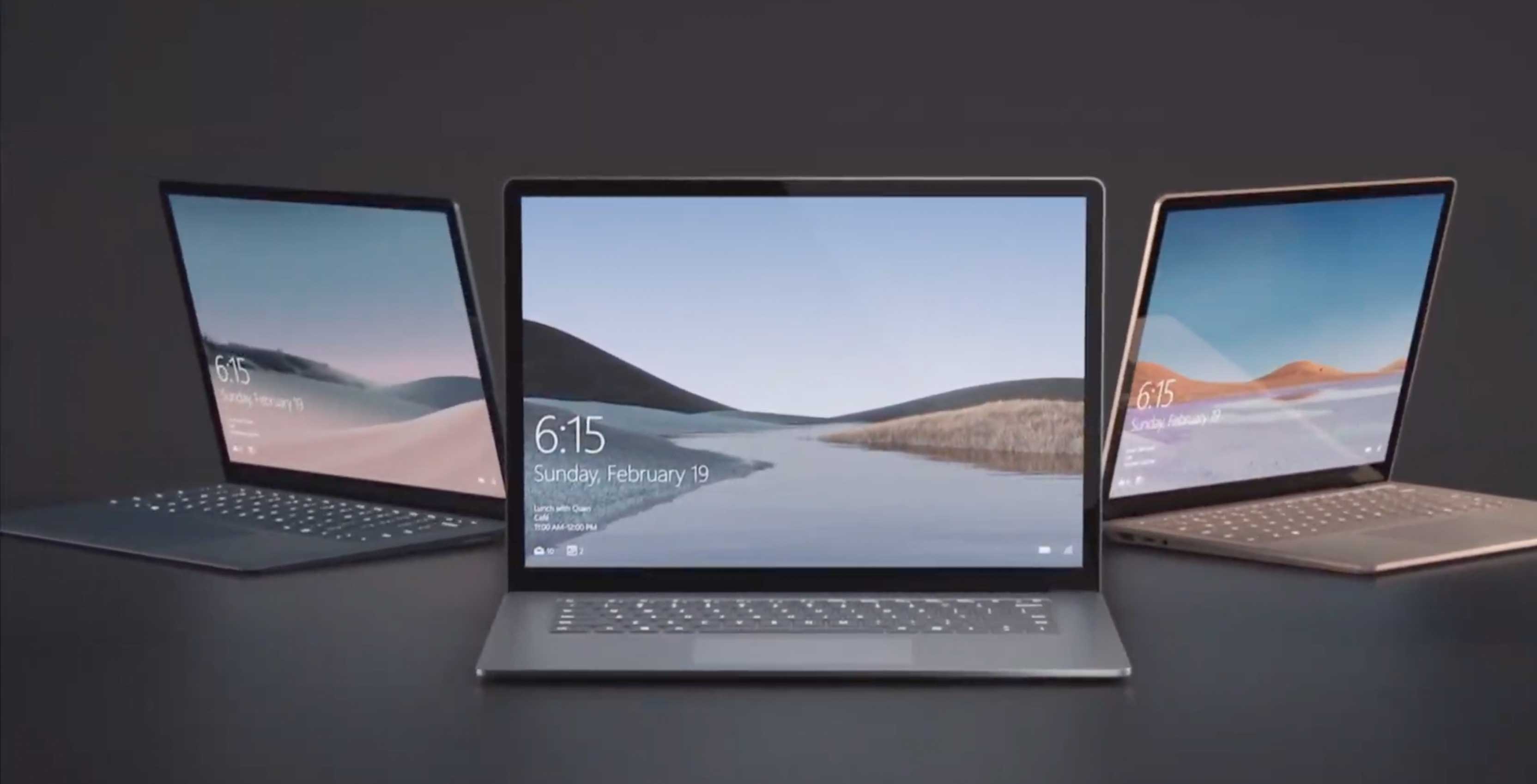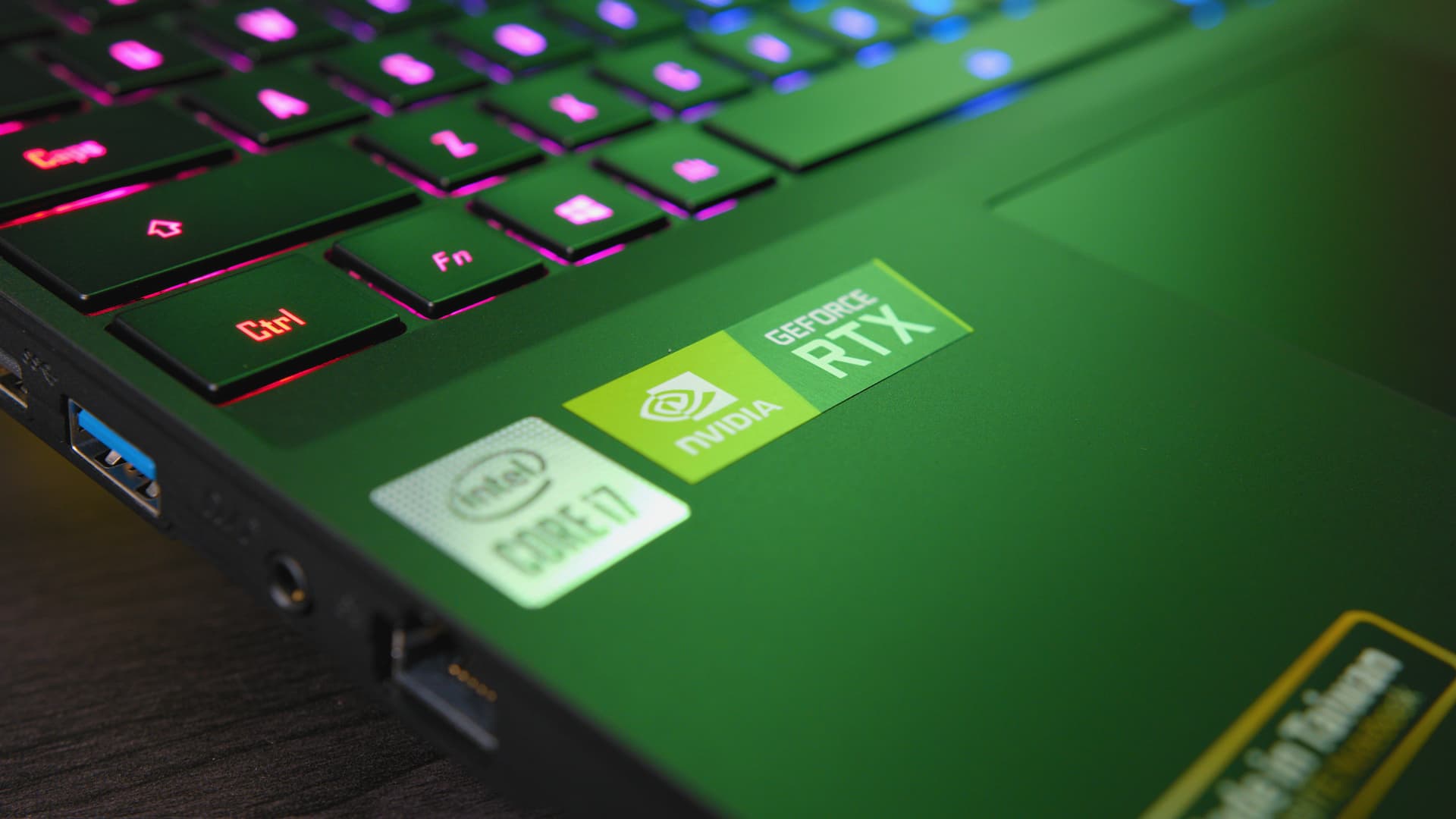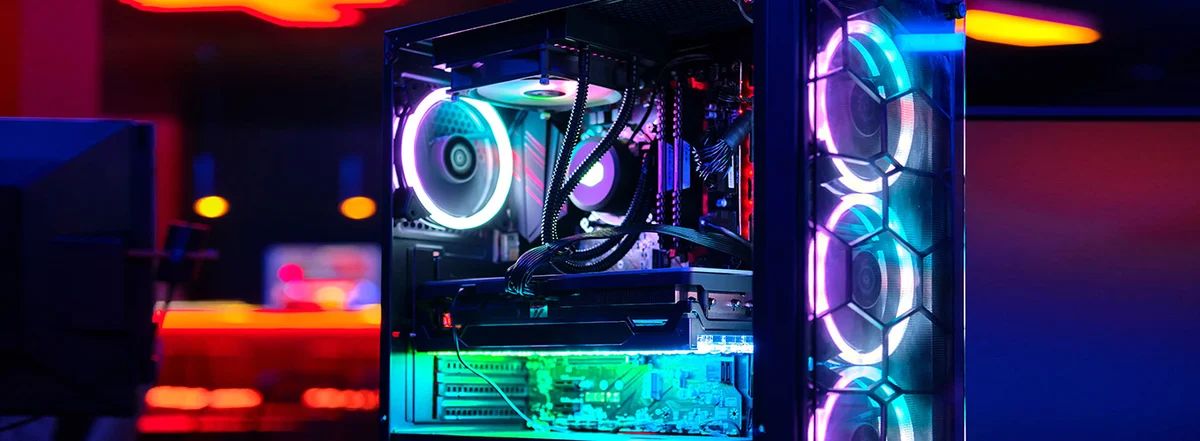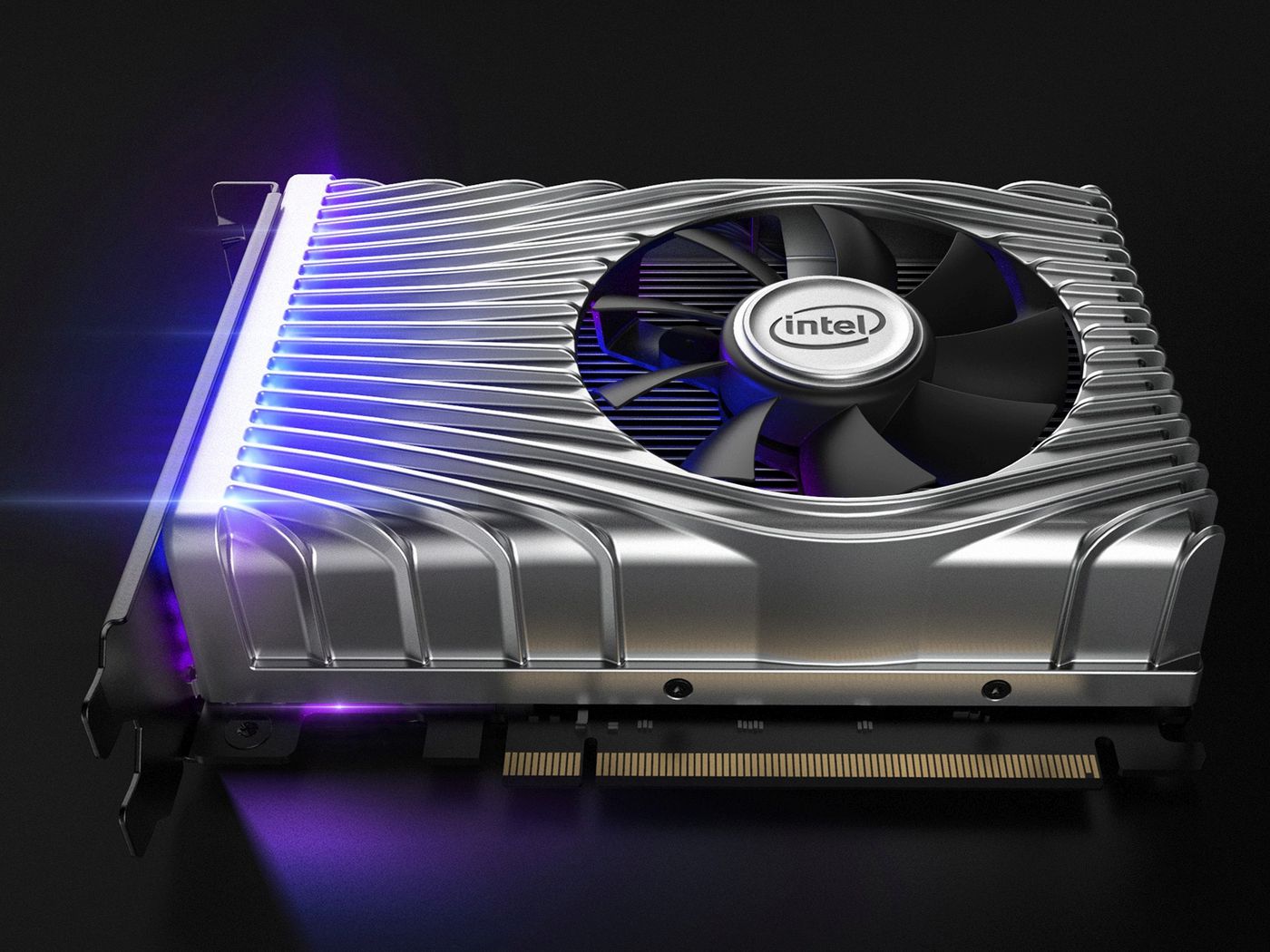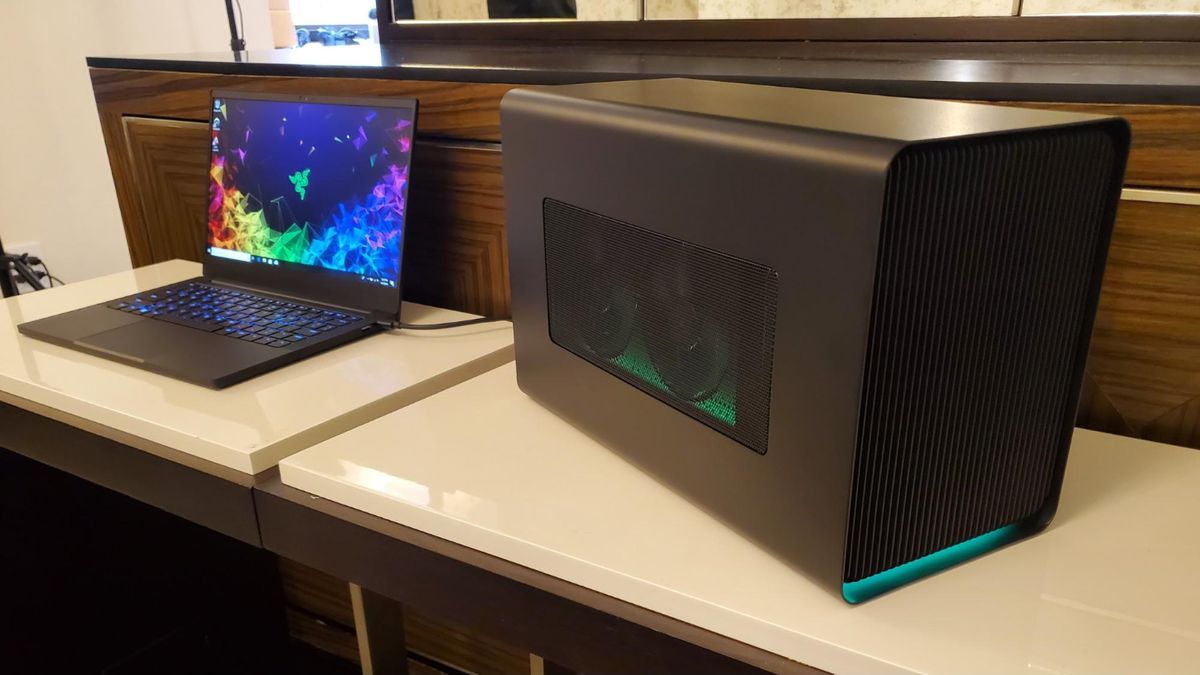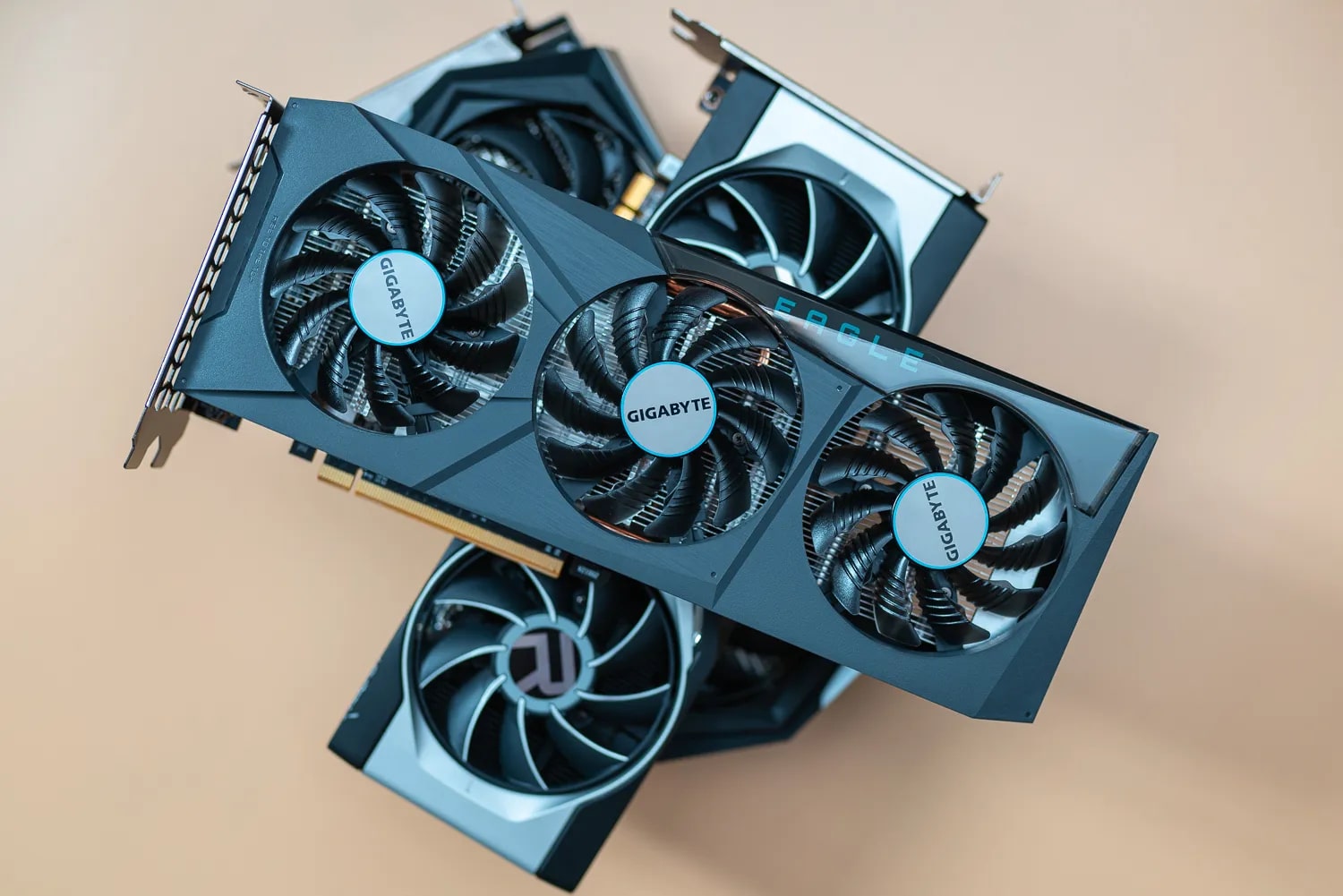What Is A Discrete GPU
A Discrete GPU, short for Graphics Processing Unit, is a dedicated graphics card that is installed separately on a computer’s motherboard. Unlike an Integrated GPU, which is integrated into the computer’s CPU, a Discrete GPU has its own processing power, memory, and cooling system. It is specifically designed to handle complex graphics tasks and computations, making it essential for various applications that require high-performance graphics.
A Discrete GPU works by offloading the graphics processing workload from the CPU, allowing for smoother and more efficient performance in graphics-intensive tasks. It is responsible for rendering and displaying images, videos, and 3D graphics on a computer’s monitor or display. From gaming and graphic design to video editing and 3D modeling, a Discrete GPU plays a crucial role in delivering high-quality visuals and enhancing the overall user experience.
Unlike Integrated GPUs, which typically share system memory with the CPU, a Discrete GPU has its own dedicated video memory (VRAM). This dedicated memory not only improves the GPU’s performance but also prevents the system from becoming overwhelmed with graphics-related tasks, resulting in a more stable and responsive system.
Additionally, a Discrete GPU often comes with advanced features such as multiple video outputs, allowing users to connect multiple displays simultaneously. This is particularly useful for professionals who require a multi-monitor setup, as well as gamers who prefer a wider field of view.
The power of a Discrete GPU is determined by its specifications, including the number of GPU cores, clock speed, memory capacity, and memory bandwidth. Higher-end Discrete GPUs are usually more powerful and can handle demanding graphics tasks, while mid-range and entry-level options are suitable for less intensive applications.
Overall, a Discrete GPU is an essential component for those who require high-performance graphics, whether it’s for gaming, content creation, or professional work. Its dedicated processing power and dedicated memory allow for smooth and visually stunning graphics, making it a vital upgrade for those seeking to enhance their computer’s graphical capabilities.
Definition of a Discrete GPU
A Discrete GPU, or Graphics Processing Unit, is a standalone graphics card that is separate from the computer’s central processing unit (CPU). It is designed specifically to handle complex graphics and visual processing tasks. Unlike an Integrated GPU, which is integrated into the CPU, a Discrete GPU has its own dedicated processing power, memory, and cooling system.
One of the key features of a Discrete GPU is its ability to offload graphics-related tasks from the CPU. This allows for more efficient and faster processing of graphics, resulting in smoother and higher quality visuals. The Discrete GPU has its own dedicated resources, including GPU cores, memory capacity, and memory bandwidth, which enable it to handle demanding graphics tasks.
Compared to an Integrated GPU, a Discrete GPU offers several advantages. First, it provides significantly higher performance, making it ideal for intensive graphics applications such as gaming, 3D modeling, and video editing. The dedicated processing power and memory of a Discrete GPU allow for faster rendering, more realistic graphics, and smoother gameplay.
Additionally, a Discrete GPU gives users more flexibility in terms of display options. Many Discrete GPUs come with multiple video outputs, allowing users to connect multiple displays simultaneously. This is especially beneficial for professionals who require a multi-monitor setup for tasks such as video editing, graphic design, or financial analysis.
Furthermore, a Discrete GPU is often accompanied by advanced features such as hardware acceleration, which can significantly speed up certain graphics tasks. For example, some Discrete GPUs have dedicated hardware for real-time ray tracing, a technique used in rendering realistic lighting and reflections in video games and computer-generated imagery (CGI).
Overall, a Discrete GPU offers improved graphics performance and flexibility compared to an Integrated GPU. Its dedicated processing power, memory, and advanced features make it an essential component for users who require high-quality graphics, whether for gaming, creative work, or professional applications. With a Discrete GPU, users can enjoy smooth and immersive visuals, unlocking the full potential of their computing experience.
Differences between Integrated and Discrete GPUs
When it comes to graphics processing, computers can have either an Integrated GPU or a Discrete GPU. Understanding the differences between these two types of GPUs is crucial in determining which option is best suited for your needs.
Integrated GPUs, as the name suggests, are integrated into the computer’s CPU. They utilize a portion of the system’s RAM for graphics processing instead of having dedicated memory. Integrated GPUs are commonly found in budget-friendly laptops and desktops, as they offer basic graphics capabilities without the need for an additional graphics card.
On the other hand, Discrete GPUs are standalone graphics cards that are separate from the CPU. They have their own dedicated processing power, memory, and cooling system. Discrete GPUs are typically found in high-performance laptops, gaming computers, and workstations that require powerful graphics capabilities.
One of the key differences between Integrated and Discrete GPUs is their performance. Integrated GPUs are usually less powerful compared to their Discrete counterparts. They are designed for everyday tasks such as web browsing, document editing, and video playback. While they can handle some light gaming and basic graphics applications, they may struggle with more demanding tasks that require high-quality visuals.
Discrete GPUs, on the other hand, are specifically designed for graphics-intensive applications. With their dedicated processing power and memory, they excel in tasks such as gaming, 3D modeling, video editing, and graphic design. Discrete GPUs offer superior performance, allowing for smoother gameplay, faster rendering, and improved visual quality.
Another significant difference is the ability to upgrade. Integrated GPUs are built into the CPU, which means they cannot be upgraded or replaced separately. If you need more graphics power, you would have to replace the entire CPU. On the other hand, Discrete GPUs can be upgraded easily by simply replacing or adding a new graphics card. This flexibility allows users to adapt their system to changing graphics requirements without replacing other components.
Power consumption is another factor to consider. Integrated GPUs tend to consume less power since they share the system’s resources, including RAM. This can result in longer battery life for laptops. Discrete GPUs, on the other hand, consume more power due to their dedicated processing power and memory. This can affect battery life significantly, especially when running graphics-intensive applications.
In summary, Integrated GPUs provide basic graphics capabilities and are suitable for everyday tasks, while Discrete GPUs offer superior performance and are ideal for gaming, creative work, and other graphics-intensive applications. The ability to upgrade and the power consumption differences are additional factors to consider when deciding between the two. Assessing your specific needs will help you determine which type of GPU is the right fit for your computer setup.
Benefits of a Discrete GPU
Adding a Discrete GPU, or Graphics Processing Unit, to a computer system brings numerous benefits that enhance the graphics capabilities and overall performance. Whether you’re a gamer, a content creator, or a professional in a graphics-intensive field, a Discrete GPU provides several advantages that significantly elevate the visual experience.
One of the main benefits of a Discrete GPU is improved graphics performance. With its dedicated processing power and memory, a Discrete GPU can handle complex graphics tasks more efficiently than an Integrated GPU. This results in smoother gameplay, faster rendering times, and overall enhanced visual quality. Whether you’re playing the latest video games, editing high-resolution videos, or working with intricate 3D models, a Discrete GPU can deliver the performance needed for a seamless experience.
In addition to performance, a Discrete GPU offers greater flexibility in display options. Many Discrete GPUs come with multiple video outputs, allowing users to connect multiple monitors simultaneously. This is particularly useful for professionals who require a multi-monitor setup, such as video editors, graphic designers, and day traders. By expanding the screen real estate, a Discrete GPU enables users to have more workspace and enhances productivity in various fields.
Another benefit of a Discrete GPU is the inclusion of advanced features and technologies. Discrete GPUs often support hardware-accelerated graphics rendering techniques like real-time ray tracing, which brings realistic lighting and reflections to games and visual applications. Other technologies, such as NVIDIA’s DLSS (Deep Learning Super Sampling) and AMD’s FidelityFX, can enhance image quality and performance by utilizing artificial intelligence and advanced algorithms, providing a more immersive and visually captivating experience.
Additionally, a Discrete GPU can offload graphics processing tasks from the CPU, allowing the CPU to focus on other computational tasks. This can result in improved overall system performance, especially in multitasking scenarios or when running resource-intensive applications alongside graphics-heavy tasks. With a Discrete GPU, you can achieve a better balance of resources and maximize the potential of your system.
Furthermore, a Discrete GPU offers the advantage of upgradability. Unlike Integrated GPUs, which are integrated into the CPU and cannot be upgraded separately, a Discrete GPU can be easily replaced or upgraded. This means you can adapt your graphics capabilities to evolving needs by simply swapping out the GPU, without the need to replace other system components.
In summary, the benefits of a Discrete GPU include improved graphics performance, enhanced display flexibility, support for advanced technologies, offloading of graphics processing from the CPU, and the ability to upgrade. Whether you’re a gamer seeking immersive gameplay, a professional demanding high-quality visuals, or a content creator aiming for faster rendering times, a Discrete GPU is a valuable addition that takes your graphics experience to the next level.
Common Uses for a Discrete GPU
A Discrete GPU, or Graphics Processing Unit, offers powerful graphics capabilities that are essential for various applications. From gaming to content creation and professional work, a Discrete GPU is utilized in a wide range of fields to enhance visual experiences and accelerate complex graphics tasks.
Gaming
One of the most common uses for a Discrete GPU is gaming. Whether you’re exploring vast open worlds or engaging in fast-paced multiplayer battles, a Discrete GPU provides the necessary horsepower to deliver smooth gameplay, realistic graphics, and immersive environments. The dedicated processing power and memory of a Discrete GPU ensure that the latest games can run at high frame rates and with high graphical settings, providing a visually stunning and responsive gaming experience.
Content Creation
Content creators, including video editors, graphic designers, and 3D animators, heavily rely on Discrete GPUs for their work. The powerful graphical capabilities, combined with software optimization, allow for faster rendering times, real-time previews, and smooth editing workflows. Whether you’re editing high-resolution videos, designing complex graphics, or sculpting lifelike 3D models, a Discrete GPU can significantly speed up your creative process and improve overall productivity.
Data Visualization
Professionals working with data visualization, such as financial analysts, data scientists, and architects, benefit greatly from a Discrete GPU. The ability to connect multiple displays, combined with the GPU’s processing power, enables the visualization of large datasets and complex 3D models. This allows for more in-depth analysis and a clearer understanding of intricate data patterns or spatial designs.
Virtual Reality (VR)
Virtual Reality (VR) has become increasingly popular, offering immersive and interactive experiences. A Discrete GPU is crucial for smooth and realistic VR experiences as it renders high-quality visuals in real-time. With a Discrete GPU, users can explore virtual worlds, play games, and engage with VR applications without experiencing lag or visual artifacts. The combination of high frame rates and low latency ensures a seamless and captivating VR experience.
Machine Learning and AI
Discrete GPUs have found their place in the field of machine learning and artificial intelligence (AI). The parallel processing capabilities of GPUs make them ideal for training and running complex neural networks. Machine learning researchers, data scientists, and AI developers can leverage the immense computational power of a Discrete GPU to accelerate training times and process massive datasets, ultimately advancing the capabilities and scope of AI applications.
In summary, a Discrete GPU is commonly used in gaming, content creation, data visualization, virtual reality, and machine learning/AI applications. Its powerful graphics capabilities, enhanced rendering speeds, and ability to handle complex computations make it an indispensable tool for enhancing visual experiences and accelerating graphics-intensive tasks across various fields.
Choosing a Discrete GPU for Your Needs
Choosing the right Discrete GPU, or Graphics Processing Unit, for your needs is crucial to ensure optimal performance and compatibility with your system. With a wide range of options available on the market, considering certain factors can help you make an informed decision.
Performance
Consider the performance requirements of the applications you intend to use. If you’re a casual gamer or work with basic graphics tasks, a mid-range GPU should suffice. However, if you’re a professional content creator or a serious gamer, you may need a high-end GPU to handle demanding applications and provide smooth and immersive experiences. Evaluate your specific requirements and choose a GPU that meets or exceeds your performance needs.
Memory
Pay attention to the VRAM (Video Random Access Memory) capacity of the GPU. The higher the memory capacity, the more data the GPU can store, which is crucial for rendering high-resolution textures, working with large models, and running graphics-intensive applications. Consider the memory requirements of the software you use and ensure the GPU has sufficient VRAM to handle the tasks you’ll be performing.
Compatibility
Check the compatibility of the GPU with your system. Ensure that your motherboard has the necessary PCIe (Peripheral Component Interconnect Express) slot to accommodate the GPU. Additionally, consider the power requirements of the GPU and ensure that your power supply unit can meet those requirements. Also, check for compatibility with your operating system and any specific software or drivers you plan to use.
Budget
Set a budget range for your GPU purchase. GPUs vary widely in price, so it’s important to determine how much you are willing to invest in your graphics capabilities. Balance your performance requirements with your budget to find the best GPU within your price range. Consider newer releases as they often offer improved performance at a similar or even lower price point than older models.
Reviews and Recommendations
Research and read reviews from reputable sources to gather information and insights about different GPU models. Look for feedback on performance, reliability, and compatibility. Consider recommendations from experts or individuals who have similar usage requirements to yours. Comparing multiple sources can help you make a more informed decision.
Future Proofing
Consider your future needs and whether you plan to upgrade your system in the near future. Investing in a slightly higher-end GPU might provide more longevity and better performance as newer and more demanding applications are released. Future-proofing your GPU can save you from needing to upgrade sooner than anticipated.
By considering factors such as performance, memory, compatibility, budget, reviews, and future-proofing, you can make an informed decision when choosing a Discrete GPU that meets your specific needs. Remember to evaluate your specific requirements and prioritize accordingly to ensure a seamless and powerful graphics experience for your applications and tasks.
Considerations Before Purchasing a Discrete GPU
Before purchasing a Discrete GPU, or Graphics Processing Unit, there are several important considerations to keep in mind to ensure you make the right choice for your specific needs and system requirements. Taking the time to evaluate these factors can help you select a GPU that offers optimal performance and compatibility.
System Requirements
Check the system requirements of the GPU you are considering. Ensure that your motherboard has the appropriate PCIe (Peripheral Component Interconnect Express) slot and power connectors to support the GPU. Additionally, consider the physical dimensions of the GPU and whether it will fit comfortably in your computer case. Taking these factors into account will prevent any compatibility issues and ensure a smooth installation process.
Power Supply
Assess whether your power supply unit (PSU) can provide sufficient power for the GPU. Discrete GPUs can be power-hungry devices, especially high-end models. Check the GPU’s power requirements and ensure that your PSU meets or exceeds those specifications. Insufficient power supply can cause instability, performance issues, or even damage to the GPU or other components of your system.
Cooling and Case Ventilation
Consider the cooling capabilities of your computer case. Discrete GPUs can generate significant heat during operation, especially under heavy graphics loads. Ensure that your case has adequate ventilation, including fans and airflow, to keep the GPU and other components cool. Overheating can lead to thermal throttling, reduced performance, or even hardware damage. If necessary, consider upgrading your case or adding additional fans for improved cooling.
Performance Needs
Assess your specific performance needs and requirements. Consider the applications you use and the tasks you perform. If you are primarily a gamer, determine the resolution and graphical settings you want to achieve. If you are a content creator, consider the rendering times and complexity of your projects. By aligning your GPU choice with your performance needs, you can ensure that you get the best value for your investment.
Budget
Set a budget for your GPU purchase. Discrete GPUs can vary widely in price, from budget-friendly options to high-end models designed for professional work. Consider your budget constraints and prioritize the features and performance that matter most to you. It’s essential to find a balance between price and performance to make the most cost-effective choice for your needs.
Future Upgrades
Think about your future upgrade plans for your system. If you anticipate upgrading other components, such as the CPU or RAM, in the near future, consider whether the chosen GPU will be compatible with those upgrades. Ensuring compatibility will save you from potential compatibility issues and ensure a smooth transition when upgrading other components in the future.
Research and Reviews
Lastly, conduct thorough research and read reviews from reputable sources. Look for information on performance, reliability, compatibility, and customer experiences. Reviews can provide valuable insights and help you make an informed decision. Consider recommendations from individuals with similar usage requirements and take into account the experiences of others to make a well-informed GPU choice.
By considering these factors – system requirements, power supply, cooling, performance needs, budget, future upgrades, and conducting research – you can make a well-informed decision when purchasing a Discrete GPU. Taking the time to evaluate these considerations will ensure that you choose a GPU that perfectly fits your requirements and enhances your graphics performance and experience.
How to Install a Discrete GPU
Installing a Discrete GPU, or Graphics Processing Unit, in your computer can greatly enhance its graphical capabilities and performance. Follow these steps to ensure a successful installation:
Step 1: Prepare Your Workstation
Start by turning off your computer and unplugging it from the power source. Open up your computer case by removing the side panel. Make sure to ground yourself by touching a metal object to discharge any static electricity and prevent damage to the GPU or other sensitive components.
Step 2: Identify the PCIe Slot
Locate the PCIe (Peripheral Component Interconnect Express) slot on your motherboard. Most modern motherboards have multiple PCIe slots; however, the primary slot for your GPU is usually labeled as PCIe x16. It is generally the longest slot with a blue plastic lock. Unlatch the PCIe slot by pressing down on the lock, which will release the retention clip and create an opening.
Step 3: Insert the GPU
Line up the gold edge connector on the bottom of the GPU with the PCIe slot. Slowly and firmly insert the GPU into the slot, making sure it is seated properly. Apply gentle pressure until you hear the retention clip click into place, securing the GPU. Avoid excessive force, as it could damage the GPU or the motherboard.
Step 4: Connect Power and Other Cables
Many Discrete GPUs require additional power beyond what is provided by the PCIe slot. Locate the PCIe power connectors on the GPU and connect the appropriate power cables from your power supply unit (PSU). Ensure that the power cables are securely and properly connected.
In addition to the power cables, connect any other necessary cables such as video output cables (HDMI, DisplayPort, etc.) for connecting your monitor or displays to the GPU.
Step 5: Secure the GPU
Once you have connected all the necessary cables, carefully close your computer case and secure it by reattaching the side panel. Ensure that all screws or clips are properly tightened.
Step 6: Install GPU Drivers
After booting up your computer, download the latest GPU drivers from the manufacturer’s website or using the provided installation disc. Install the drivers following the provided instructions. These drivers are essential for proper GPU functionality and optimal performance.
Step 7: Configure Display Settings
Once the GPU drivers are installed, access the display settings on your computer to configure the resolution, refresh rate, and other display preferences. Make sure to select the appropriate display output connected to the GPU.
After completing these steps, your Discrete GPU should be successfully installed and ready to deliver enhanced graphics performance for gaming, content creation, or any other graphics-intensive tasks you may have.
Maintaining and Optimizing a Discrete GPU
Maintaining and optimizing your Discrete GPU, or Graphics Processing Unit, is essential to ensure its longevity, performance, and stability. By following these guidelines, you can keep your GPU running smoothly and maximize its capabilities:
Keep Your GPU Clean
Dust and debris can accumulate on the GPU over time, leading to poor thermal performance and potential overheating. Regularly clean the GPU’s cooling fans and heatsink using compressed air or a soft brush to remove any buildup. Ensure that the GPU and surrounding area are free from dust to maintain optimal cooling and airflow.
Monitor Temperatures
Monitor your GPU’s temperatures to prevent overheating. Utilize software tools, such as GPU monitoring utilities or system monitoring software, to keep an eye on the GPU’s temperatures. High temperatures can negatively impact performance and potentially damage the GPU. If temperatures consistently exceed recommended limits, consider improving cooling in your system or adjusting fan speeds.
Update GPU Drivers
Regularly update your GPU drivers to take advantage of bug fixes, performance improvements, and new features. Visit the manufacturer’s website or use their software to check for and install the latest GPU drivers. Keeping your drivers up to date ensures compatibility with new software releases and optimal performance for your GPU.
Optimize GPU Settings
Adjusting GPU settings can enhance performance and visual quality. You can fine-tune settings through the GPU control panel or third-party software. Experiment with options like anti-aliasing, texture filtering, and other visual effects to find the balance between performance and image quality that suits your preferences and system capabilities.
Manage GPU Power Settings
Consider adjusting the power settings of your GPU to balance performance and energy efficiency. GPU control panels often offer power management options that allow you to customize power usage. Select a setting that suits your needs, whether it’s maximizing performance, conserving energy, or finding a balance between the two.
Avoid Overclocking
While it can potentially boost performance, overclocking your GPU should be done with caution. Overclocking can increase power consumption, generate more heat, and potentially reduce the lifespan of your GPU. If you choose to overclock, do so responsibly and monitor temperatures and stability closely to prevent any negative consequences.
Regularly Check for Updates and Patches
Stay up to date with firmware updates or patches specific to your GPU. Manufacturers often release updates to address bugs, improve compatibility, and enhance performance. Check the manufacturer’s website or software regularly for any updates and install them accordingly.
By following these maintenance and optimization tips, you can ensure that your Discrete GPU remains in optimal condition, delivers reliable performance, and enhances your graphics experience. Regular maintenance and proper optimization can significantly extend the lifespan of your GPU while maximizing its capabilities.
Upgrading a Discrete GPU
Upgrading a Discrete GPU, or Graphics Processing Unit, can breathe new life into your computer system and significantly enhance its graphics performance. Whether you’re a gamer, a content creator, or a professional requiring more power for graphics-intensive tasks, upgrading your GPU can deliver improved visuals and smoother performance. Here is a guide to help you through the process:
Evaluate Your Needs
Determine your specific requirements and goals for upgrading your GPU. Assess the applications you use, such as games, software, or tasks that require graphics processing. Consider the performance improvements you desire and set a budget for your upgrade. Understanding your needs will help you select the appropriate GPU that suits your requirements.
Research GPU Options
Research the available GPUs on the market. Look for reviews, comparison charts, and benchmarks to gauge their performance and compatibility with your system. Consider factors such as power requirements, physical dimensions, cooling solutions, and features that align with your needs. Make a shortlist of GPUs that offer the best value and meet your specific requirements.
Check Compatibility
Ensure that your computer system is compatible with the GPUs you are considering. Check the motherboard’s compatibility with the preferred GPU’s interface, usually PCIe (Peripheral Component Interconnect Express). Verify that your power supply unit (PSU) can provide enough power to support the new GPU. Additionally, consider physical restrictions, such as the available space inside your computer case.
Prepare for Installation
Before installing the new GPU, uninstall the drivers of the previous GPU from your system. Use a driver uninstallation tool or the manufacturer’s driver removal utility to ensure a clean removal. Take note of any specific instructions provided by the GPU manufacturer regarding driver installation procedures.
Install the New GPU
Open your computer case and locate the PCIe slot where the current GPU is installed. Carefully remove the existing GPU by releasing the retention clip and gently pulling it out of the slot. Insert the new GPU into the PCIe slot, aligning it properly, and firmly press down until it clicks into place. Connect any necessary power cables from your PSU to the new GPU. Secure the GPU using any screws or latches provided.
Install GPU Drivers
After physically installing the new GPU, boot up your computer and install the latest GPU drivers. Visit the manufacturer’s website or use their driver installation utility to download and install the appropriate drivers for your new GPU. Follow the provided instructions to complete the installation.
Optimize GPU Settings
Once the new GPU drivers are installed, optimize the settings to ensure the best performance and visual quality. Adjust settings in the GPU control panel or third-party software according to your preferences and system capabilities. Fine-tune options such as anti-aliasing, texture filtering, and other visual effects to your desired balance of performance and image quality.
By following these steps, you can successfully upgrade your Discrete GPU and enjoy the improved graphics performance and enhanced visual experiences in the applications and tasks that matter to you. With a more powerful and capable GPU, you can immerse yourself in games, create stunning visual content, or accelerate graphics-intensive work with ease.
Conclusion
Discrete GPUs, or Graphics Processing Units, play a vital role in enhancing the visual experience and performance of a computer system. Whether you’re a gamer seeking immersive gameplay, a content creator aiming for stunning graphics, or a professional requiring high-quality visuals, a Discrete GPU can take your computing experience to the next level.
Throughout this article, we explored the definition of a Discrete GPU and the differences between Integrated and Discrete GPUs. We discussed the benefits of a Discrete GPU, including improved performance, flexibility in display options, support for advanced technologies, and the ability to offload graphics processing from the CPU. We also explored common uses for a Discrete GPU, such as gaming, content creation, data visualization, virtual reality, and machine learning.
When considering purchasing a Discrete GPU, we highlighted important factors to consider, including performance needs, memory capacity, compatibility, budget, and future upgrades. We also emphasized the significance of research and reviews to make an informed decision.
Installing a Discrete GPU requires careful consideration of system requirements, insertion into the appropriate PCIe slot, connecting power and necessary cables, and installing the required GPU drivers. We discussed how to maintain and optimize a Discrete GPU, including cleaning, monitoring temperatures, updating drivers, optimizing settings, managing power, and staying up to date with firmware updates and patches.
Lastly, we explored the process of upgrading a Discrete GPU, including evaluating needs, researching options, checking compatibility, preparing for installation, installing the new GPU, installing drivers, and optimizing settings.
In conclusion, a Discrete GPU is a powerful component that can greatly enhance visual experiences, improve performance, and accelerate graphics-intensive tasks. By understanding the benefits, considering your needs, and following proper maintenance and installation procedures, you can maximize the capabilities of your Discrete GPU and unlock its full potential for gaming, content creation, data visualization, and more. Choose a Discrete GPU that aligns with your requirements and enjoy the immersive, high-quality graphics that enhance your computing experience.







